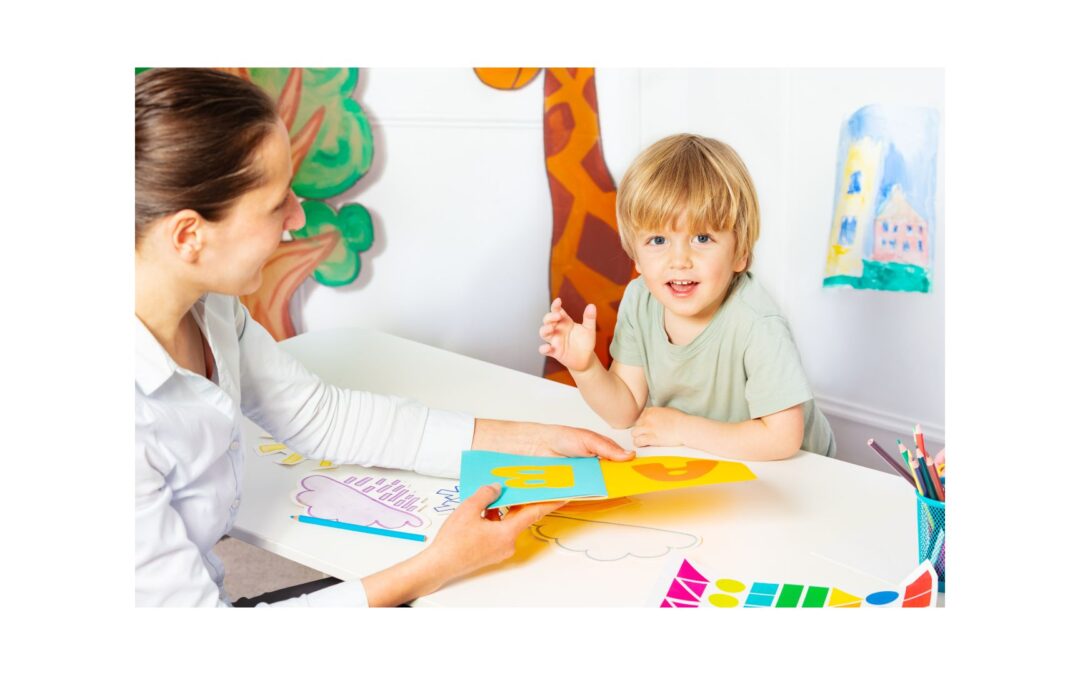Parenting a child with autism can be both rewarding and challenging. As a parent, you want to provide your child with the best opportunities to thrive and succeed, but sometimes it can feel like navigating through a maze with no clear path. However, amidst the uncertainties, there’s a beacon of hope in the form of Applied Behavior Analysis (ABA) therapy.
ABA therapy has emerged as one of the most effective treatments for children with autism spectrum disorder (ASD). Its structured approach focuses on improving specific behaviors, such as social skills, communication, and adaptive learning, while also reducing behaviors that may impede development.
In this blog post, we’ll delve into the world of ABA therapy, exploring how it works, its benefits, and why it’s considered a cornerstone in unlocking the potential of children with autism. Whether you’re a parent, caregiver, or simply interested in learning more about autism interventions, this guide aims to shed light on the transformative power of ABA therapy. So, let’s embark on this journey together and discover how ABA therapy can be a game-changer in your child’s development.
Behavioral Techniques and Strategies: Empowering Your Child Through ABA Therapy
Behavioral techniques and strategies are at the core of Applied Behavior Analysis (ABA) therapy, offering structured and evidence-based interventions to support children with autism spectrum disorder (ASD) in reaching their full potential. In this section, we’ll delve into the key behavioral techniques and strategies employed in ABA therapy and explore how they can empower your child’s development.
- Positive Reinforcement: Positive reinforcement is a fundamental principle of ABA therapy, focusing on rewarding desired behaviors to increase their occurrence. In practice, this may involve using rewards such as praise, tokens, or preferred activities to reinforce positive behaviors such as communication, social interaction, and academic skills. By consistently reinforcing desired behaviors, children with autism learn to associate these behaviors with positive outcomes, motivating them to repeat them in the future.
- Prompting and Prompt Fading: Prompting involves providing cues or assistance to help a child perform a desired behavior. This can range from physical prompts, such as guiding a child’s hand through a task, to verbal prompts, such as providing instructions or cues. Over time, prompts are gradually faded to encourage independent performance of the behavior. Prompt fading allows children to develop skills at their own pace while gradually reducing the need for external assistance.

- Task Analysis: Task analysis involves breaking down complex skills or tasks into smaller, manageable steps. This allows children with autism to learn new skills systematically, progressing from simple to more complex tasks. By breaking down tasks into achievable steps, children can experience success at each stage of learning, building confidence and competence over time.
- Functional Communication Training (FCT): FCT focuses on teaching alternative, functional communication skills to replace challenging or maladaptive behaviors such as aggression, tantrums, or self-injury. Through FCT, children learn to express their needs, wants, and feelings using appropriate communication methods such as words, signs, or picture symbols. By providing children with effective means of communication, FCT reduces frustration and enhances their ability to interact with others positively.
- Visual Supports and Schedules: Visual supports, such as visual schedules, cue cards, and social stories, are widely used in ABA therapy to enhance understanding and communication for children with autism. Visual supports provide clear, concrete information in a format that is easily accessible and understandable for children with autism, helping them navigate daily routines, transitions, and social interactions more effectively.
Family Involvement and Support: A Key Pillar in ABA Therapy for Autism
In the journey of Applied Behavior Analysis (ABA) therapy for autism, family involvement and support stand as crucial elements that significantly contribute to a child’s progress and overall well-being. Recognizing the pivotal role families play in the success of therapy, ABA programs emphasize collaboration, communication, and empowerment to create a supportive environment for both the child and their family members. In this section, we’ll explore the importance of family involvement and support in ABA therapy and discuss practical ways for families to actively participate in their child’s treatment.
Understanding and Education
ABA therapy begins with a foundation of understanding. Families are provided with information about autism spectrum disorder (ASD), ABA principles, and the specific goals of their child’s treatment plan. This knowledge equips families with a better understanding of their child’s strengths, challenges, and the strategies used in therapy, empowering them to actively participate in the intervention process.

Collaborative Goal Setting
Family involvement extends to the collaborative goal-setting process. ABA therapists work closely with families to identify individualized goals that align with the child’s needs, preferences, and family priorities. By involving families in the goal-setting process, ABA therapy becomes more personalized, relevant, and impactful, fostering a sense of ownership and commitment among family members.
Participation in Therapy Sessions
Family participation in therapy sessions is encouraged and welcomed in ABA programs. Parents and caregivers have the opportunity to observe therapy sessions, actively engage in learning new techniques, and practice strategies under the guidance of ABA therapists. This hands-on involvement not only strengthens the parent-child bond but also enhances consistency and generalization of skills across different environments.
Implementing Strategies at Home
A key aspect of family involvement in ABA therapy is the implementation of strategies and techniques learned during therapy sessions in the home environment. ABA therapists provide families with practical tools, resources, and support to integrate ABA principles into daily routines, activities, and interactions with their child. Consistent implementation of ABA strategies at home reinforces learning, promotes skill generalization, and fosters a supportive learning environment for the child.
Communication and Collaboration
Effective communication and collaboration between families and ABA therapists are essential for the success of therapy. Regular updates, progress reports, and open dialogue allow families to stay informed about their child’s progress, discuss any concerns or questions, and provide feedback on the effectiveness of interventions. This partnership-based approach ensures that therapy remains responsive to the evolving needs of the child and family.
Conclusion
At Above And Beyond Therapy, Inc. in Van Nuys, California, USA, we believe in unlocking every child’s potential through Applied Behavior Analysis (ABA) therapy. With our dedicated team and proven methodologies, we are committed to providing personalized support tailored to each child’s unique needs. Our goal is to empower children with autism to thrive and achieve their fullest potential in all aspects of life. Contact us today at 174-726-56666 to embark on this transformative journey with our compassionate and experienced team. Together, we can make a meaningful difference in your child’s life.

